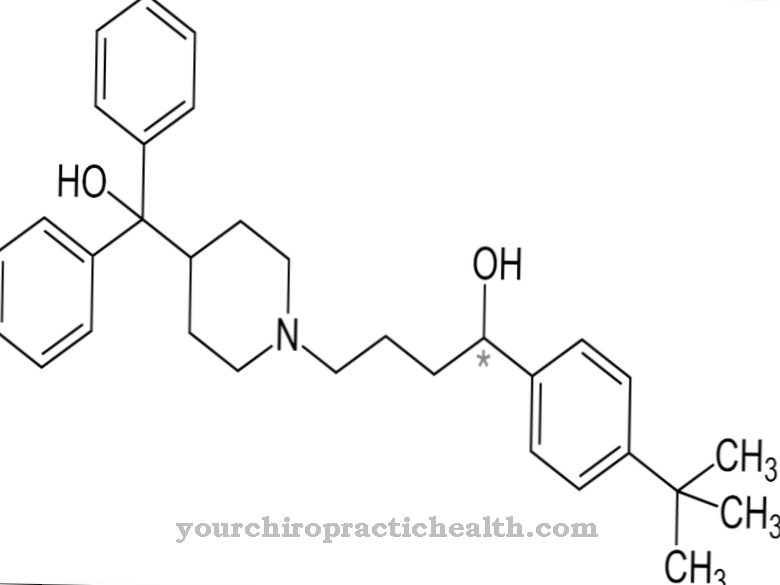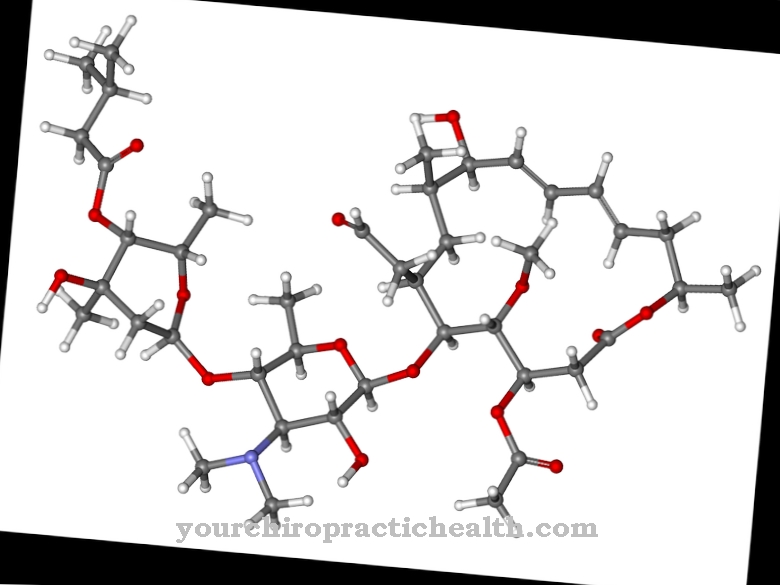Probenecid is a drug for hyperuricemia and gout that is a second line drug. It inhibits the URAT1 exchanger in the kidney and thus increases the release of urea into the urine, while it decreases the excretion of organic anions. Probenecid interacts with many other drugs.
What is probenecid?
Since the drug stimulates the body to excrete uric acid, probenecid is a uricosuric agent. Its field of application is the treatment of hyperuricemia and gout, the latter being a consequence of hyperuricemia.
Probenecid is a second choice: in many cases it is not the best option for the first treatment. The active ingredient with the empirical formula C13H19NO4S is a solid and has a slightly bitter taste. As a medicinal product, the crystals are often in tablet form. MSD Sharp & Dohme GmbH patented the preparation under the name Santuril®.
Originally it was supposed to ensure the supply of penicillin during the Second World War, because as probenecid can increase the effect of penicillin, a lower dose is required when the two drugs are combined. In practice, however, the agent was not used because the development of probenecid was not ended until 1952.
Pharmacological effect
In the human body, the kidney produces urine and initially forms the primary urine. The organ recovers various substances from this, including electrolytes and urea. In this filtering process, the urea serves to shift the osmotic gradient, which allows the liquid and substances dissolved in it to diffuse through the membrane. When resuming, the URAT1 exchanger - comparable to a revolving door - picks up organic anions on one side and retrieves urea on the other.
Probenecid intervenes in this process: the reuptake of uric acid decreases because the drug hinders the exchanger. As a result, the human body releases more uric acid in the urine than usual. This process lowers the level of uric acid in the blood, which is responsible for hyperuricemia and the joint problems it causes.
When probenecid reduces the activity of the URAT1 exchanger, more organic anions remain in the body in return. In this way, probenecid can also affect the way other drugs work, if the body also excretes a smaller amount of these molecules.
Medical application & use
The drug is indicated for the treatment of hyperuricemia or the resulting gout, but is not the first treatment option. Instead, probenecid is usually only used when efforts with other agents are unsuccessful. It is also approved for this purpose in Germany.
Medicine defines hyperuricemia as a pathologically elevated uric acid level that exceeds 6.7 mg / dl (women) or 7.4 ml / dl (men) in the blood serum. Symptoms of hyperuricemia do not always manifest themselves. However, if the uric acid crystallizes as salt in the joints, gout develops.
During an acute attack, symptoms of inflammation appear on the affected joint. They are often associated with pain. Probenecid is contraindicated during an acute gout attack. In response to the uric acid salts deposited in the joints, the cartilage hardens and becomes thicker. This stage is also known as chronic gout.
Although most people are 30–40 years old when the disease onset, in rare cases gout can develop in childhood. However, probenecid is not suitable for children under 2 years of age.
Risks & side effects
Probenecid is not suitable for treatment in patients with kidney problems. This also applies if the likelihood of developing kidney stones is increased. In addition, the drug is contraindicated in case of hypersensitivity and the presence of an acute gout attack.
The potential side effects of probenecid include various skin reactions such as itching, hair loss, and gum inflammation, and digestive problems such as bloating and nausea. Headache, drowsiness, and loss of appetite can also occur.
Interactions can occur between probenecid and numerous other drugs. In most cases, probenecid increases the concentration of the other active substances in the blood serum and this can change the way they work. Other substances, such as acetylsalicylic acid (ASA), can reduce the therapeutic effect of probenecid or, in other cases, lead to an increased risk of action.












.jpg)



.jpg)










.jpg)
